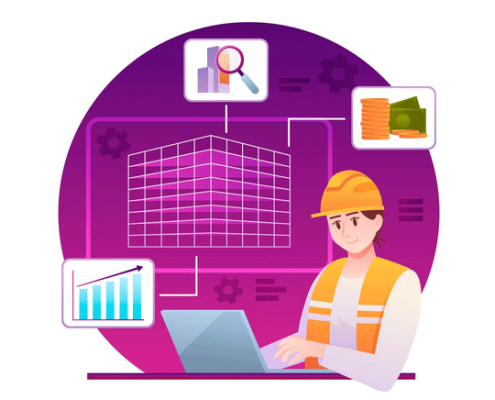Improve Workplace Compliance With Safety Management Software
In today’s fast-paced work environment, maintaining safety compliance can be challenging. However, integrating safety management software into your operations can streamline processes, enhance safety culture, and ensure compliance with regulatory requirements.
Software for safety management is crucial in enhancing workplace compliance, as it streamlines the process of monitoring and enforcing safety regulations. By automating routine tasks such as incident reporting, risk assessments, and compliance tracking, these software solutions significantly reduce the likelihood of human error and ensure that all safety protocols are consistently followed. Furthermore, in Software for risk management, they provide employers with real-time data analytics that highlight potential hazards and areas of non-compliance, allowing for proactive measures to be implemented before issues escalate into serious accidents.

The integration of safety management software also fosters a culture of accountability among employees, as everyone can access updated policies and procedures at their fingertips. Ultimately, investing in software for safety management is not just about meeting regulatory requirements; it’s about creating a sustainable framework that prioritizes the well-being of employees while driving organizational success.
Here are the top ways safety management software can improve workplace compliance:
1. Centralized Documentation
Safety management software allows businesses to store all safety-related documents in a centralized, easily accessible digital repository. This ensures that safety manuals, training records, compliance certificates, and inspection logs are up-to-date and available for review, eliminating the risk of losing critical documents.
2. Automated Compliance Tracking
The Software for safety management can automatically track compliance deadlines and alert management about upcoming inspections, certifications, or renewals. Automated reminders ensure that no compliance requirements are overlooked, preventing costly fines or shutdowns due to missed deadlines.
3. Streamlined Incident Reporting
With safety management software, employees can quickly and efficiently report incidents, hazards, or near-misses. Digital reporting facilitates real-time data capture and ensures accurate documentation, promoting timely corrective actions and preventing future incidents.
4. Enhanced Employee Training and Competency Management
Software for safety management often includes modules for training management, allowing employers to schedule, track, and document employee training sessions. This ensures that all staff members are adequately trained and compliant with safety standards, ultimately reducing workplace accidents.
5. Comprehensive Data Analytics
Advanced reporting and analytics capabilities enable businesses to identify trends, monitor key performance indicators, and assess the effectiveness of safety initiatives. Data-driven insights help organizations make informed decisions, allocate resources efficiently, and enhance overall safety strategies.
6. Improved Communication and Collaboration
The Software for safety management fosters better communication between teams by providing a platform for sharing information, updates, and safety alerts quickly and efficiently. Improved communication ensures that all employees are informed and engaged in safety protocols, promoting a culture of compliance and accountability.
7. Regulatory Updates and Best Practice Integration
Software for safety management often includes features to keep you updated with the latest regulatory changes and industry best practices. Businesses can easily incorporate these updates into their existing safety protocols, minimizing the risk of non-compliance and staying ahead in safety management.
By leveraging safety management software, organizations can significantly improve workplace compliance, create a safer work environment, and ultimately enhance productivity. Investing in such a tool not only safeguards employees but also fortifies business operations against potential risks and liabilities.
Key Features of Havteq’s Software for safety management
Havteq’s software for safety management stands out in a crowded market, offering key features that are essential for any organization committed to maintaining a safe and compliant workplace.
- One of the standout aspects is its user-friendly interface, which ensures that all team members can easily navigate the system without extensive training. This accessibility fosters greater engagement and adherence to safety protocols.
- Another critical feature is the robust reporting and analytics capabilities. Havteq’s Software for safety management allows organizations to track incidents, analyze trends, and generate comprehensive reports with just a few clicks. This data-driven approach not only helps in identifying potential hazards but also enables proactive measures to prevent future incidents.
- Havteq’s Software for safety management integrates seamlessly with existing systems, ensuring that safety management processes are streamlined across departments. With customizable dashboards and real-time alerts, users can stay informed about safety issues as they arise, allowing for quick responses that could save lives.
Investing in Havteq’s software means equipping your organization with the tools necessary for effective safety management—because when it comes to workplace safety, there’s no room for compromise. Schedule your demo today with Havteq Solution or call us +91-9416460450 +91-8950505999 for more details about safety management software.
FAQs
What is safety management software?
Software for safety management is a digital tool designed to help organizations manage and improve workplace safety and compliance. It typically includes features such as incident reporting, safety training tracking, risk assessment, and compliance management.
How does safety management software improve workplace compliance?
Safety management software helps improve workplace compliance by providing a centralized platform for managing safety-related tasks and processes. It allows organizations to track and monitor compliance requirements, conduct safety audits, and ensure that employees are trained and informed about safety protocols.
What are the benefits of using safety management software?
Some of the benefits of using Software for safety management include improved workplace safety, reduced risk of incidents and accidents, streamlined compliance management, better visibility into safety performance, and the ability to track and analyze safety data for continuous improvement.
Is safety management software suitable for all types of industries?
Yes, safety management software can be used in a wide range of industries, including manufacturing, construction, healthcare, transportation, and more. It can be customized to meet the specific safety and compliance needs of different industries.
How can safety management software help with incident reporting?
Software for safety management typically includes incident reporting features that allow employees to quickly and easily report safety incidents or near-misses. This helps organizations to identify and address potential safety hazards and prevent future incidents.


